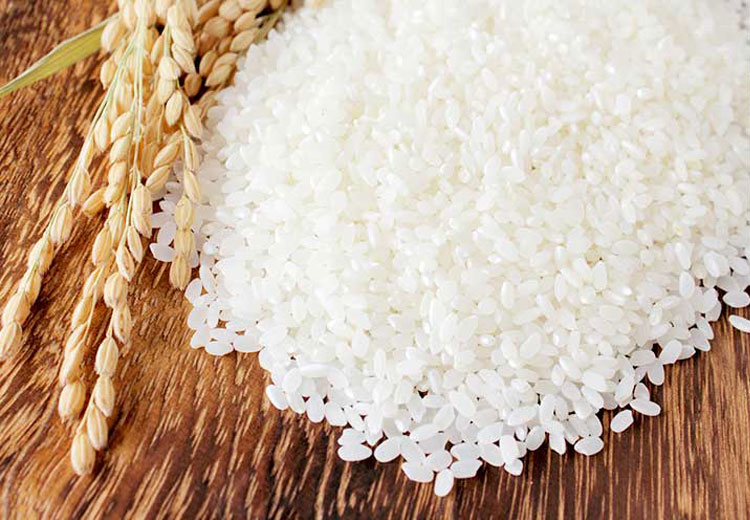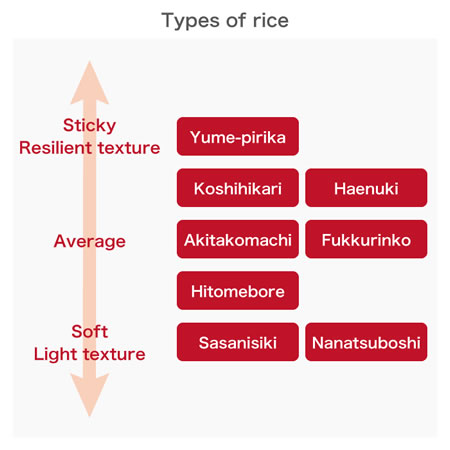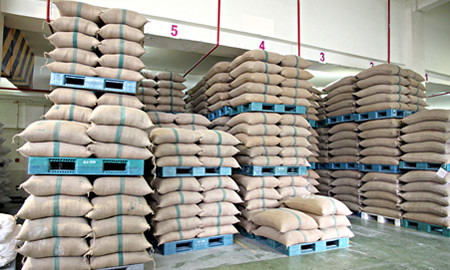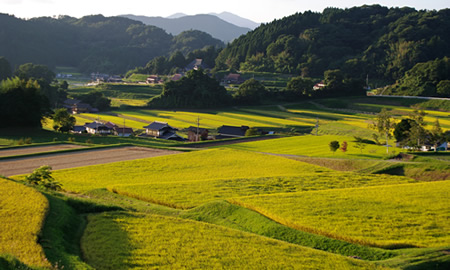Essiential Ingredients of Japanese Food - Rice

Rice
The most important food for Japanese people
Delicious rice is a fruit of different climates and cultures

Rice is an indispensable grain in the Japanese diet, and is served as staple food everyday. Rice making has started approx. 2500 years ago in Japan. Because Japan is rich in quality water, sunlight and clearly defined four seasons, which are the blessings of warm climates of Japan, the nation’s environment is suitable for rice making. With different climates and environments in each region of the country stretching over from north to south, various kinds of methods of rice making are being implemented.
Each type of rice has different tastes, flavors and the size of grains. You may be amazed with the depth of the selection of rice as you try to find your favorites because each type of rice has different stickiness and texture.
Thoroughgoing quality management

Over a long period of time, rice makers have devoted their life to create cultivation methods effectively using Japan’s rich natural environment, and developed rice making methods that are not easily affected by external environment factors like harsh climates and harmful insects.
A preservation method of rice is thorough. Under thoroughly controlled systems, harvested rice is threshed and stored in low-temperature storages with a temperature of 15 degrees (59 degrees Fahrenheit) or lower. Its freshness is always maintained as only a quantity demanded by the market is shipped.
Moreover, traceability in the creation / preservation of reports on business trades, etc. in each step from cultivation to sales/production are ruled by the central government. Because the country and rice makers strictly follow such rules on rice making, consumers can enjoy freshly preserved safe and reliable rice throughout a year.
Rice is a healthy power food.

Cooked rice hardly contains fat while maintaining carbohydrate, protein, vitamins (B1 and B2), calcium, iron, etc.
Another attractive factor of rice is that the elevation of blood sugar level is slower after consuming rice compared to flour (ingredient of breads and noodles), and this prevents us from overeating snacks because a feeling of fullness lasts longer. Lately, brown rice (unpolished rice) has been drawing attentions as a healthy food because it contains more vitamins than white rice. Rice is a healthy food suitable for those being conscious of health and beauty.
Beautiful landscapes seen only in Japan

Rice cultivation starts in spring and finishes in autumn. In early summer, freshly green, young rice outstretching to the sky creates refreshing atmospheres in a landscape, while in autumn, rice ears swinging in winds color fields in gold. Throughout a year, rice fields create beautiful landscapes as a season changes.
Recently, it has become popular that huge drawings and writings are created on rice fields as a big canvas using different colored rice plants. Such archetypal images of Japan create relaxing atmospheres, and they will surely give you an unimaginable excitement and relaxing feeling.
